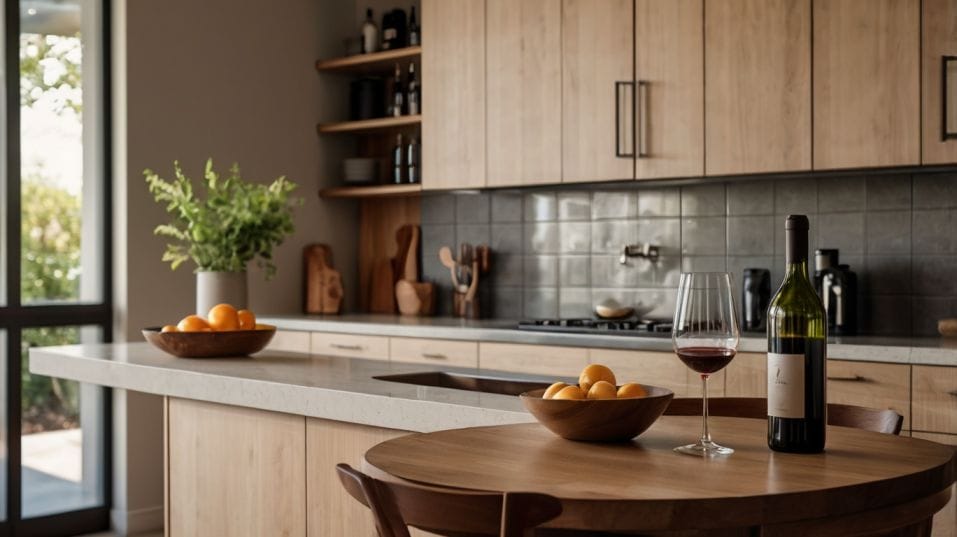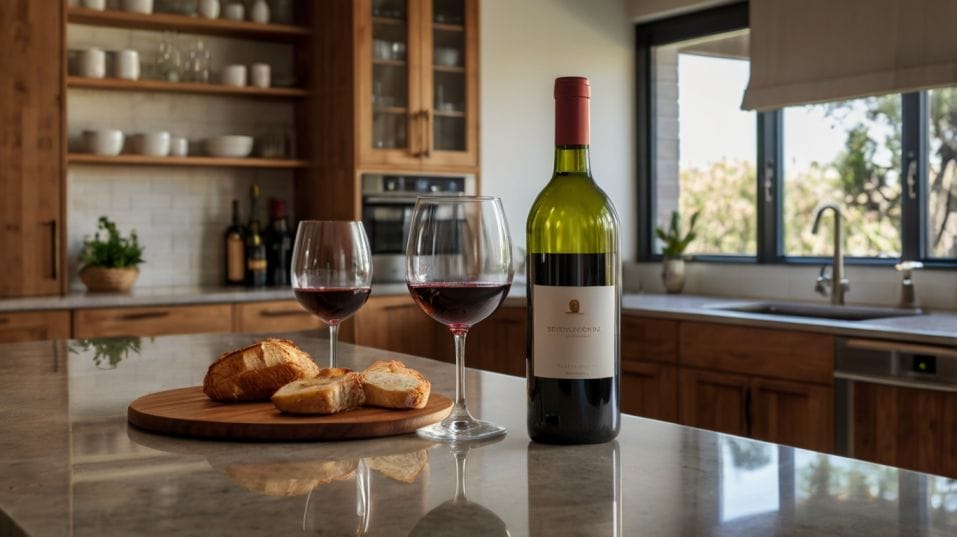What Wine to Bring to a Housewarming
Learn how to choose the perfect housewarming wine—flavor-first, crowd-friendly, and confidence-boosting for anyone early in their wine journey.

What kind of wine says “welcome home” without trying too hard? If you’re starting to take wine more seriously, picking the right bottle for a housewarming is your chance to show taste—not just good manners.
You don’t need to impress anyone. You just need something that feels relaxed, considered, and genuinely good. Think flavor over flash. No gimmicks. Just a bottle that fits the moment and adds to the room, not the spotlight.
Start with Flavor, Not Flash
A common mistake when picking wine for others is aiming to impress instead of aiming to please.
You’re not curating a cellar—you’re walking into someone’s brand-new space, where boxes might still be unpacked and glasses mismatched.
The wine should feel relaxed but thoughtful. Something drinkable now, not something that requires ideal conditions or a tasting seminar.
This is where knowing wine by flavor—rather than reputation—pays off. You want wines that are expressive, not overpowering.
Think fresh acidity, soft tannins, and enough complexity to stay interesting. Wines with lift, texture, and balance will shine in a housewarming setting where food, chatter, and movement are part of the equation.
It’s less about varietal correctness, more about what works in a casual but energized room.

A few dependable styles:
- Lively whites like Albariño, Grüner Veltliner, Vermentino, or a dry Riesling show citrus, herbs, and minerality without feeling sharp or austere. They work cold, travel well, and go with almost any snacks on hand.
- Chillable reds like Gamay, Mencía, or light Pinot Noir offer fruit, earth, and lift. They’re easy to drink but still have detail for the curious.
- Textured rosés or skin-contact whites can surprise people, especially when they taste more savory than sweet. These work well in mixed crowds where wine interest varies.
These aren’t flashy wines—but they’re not generic either. They carry flavor and structure in a way that invites conversation without demanding it.
Match the Wine to the Setting, Not Just the People
Reading the room is part of choosing wisely.
A new apartment with pizza boxes and a Bluetooth speaker needs a different bottle than a renovated craftsman with candles and curated playlists. But that doesn’t mean expensive vs. cheap—it means tone.
For laid-back settings
Where people might be drinking out of tumblers or red Solo cups, prioritize flexibility. Low-alcohol, chill-friendly wines are your best bet. They don’t require perfect glassware or slow sipping.
Pét-nats, offbeat sparkling wines, Lambrusco, or anything fizzy and fresh can carry the energy of a party without overwhelming it. These wines aren’t novelty—they’re practical with personality.
For more refined environments
Think hosts who’ve set the table, or friends who already talk about wine with some fluency—choose something with structure and subtlety.
A lean Burgundy-style Pinot, a restrained Tuscan red, or a white Burgundy alternative (say, Mâconnais or Etna Bianco) brings more weight while keeping the same balance and drinkability.
Either way, the wine should feel ready to pour. Skip the ones that need decanting or “open up after an hour.” Most people aren’t waiting that long. Choose wines that taste honest and clean right from the first pour.
Bottle Choice Is a Gesture, Not a Statement
There’s a difference between bringing wine and gifting wine. At a housewarming, you’re doing a bit of both.
Ideally, the bottle is good enough to open now, but nice enough to save for later. That means skipping throwaways and also skipping trophy bottles.
Aim for something that invites opening without pressuring the host to uncork it on the spot.
When in doubt, think of wine as a supporting act. It shouldn’t steal attention from the people, the food, or the moment. But it should be better than forgettable.
A few practical rules of thumb:
- Stick to bottles under $30, but avoid the bottom shelf unless you know the producer.
- Go with natural cork or screw cap, not wax-dipped bottles or awkward novelty closures.
- If you’re unsure, ask for a recommendation based on mood, not price or popularity.
Wine shop pros respond better to “I want something drinkable, slightly savory, and good with salty snacks” than “I need a red under $20.” Be curious about style, not status.
Details That Matter More Than You Think
Presentation doesn’t have to be fussy, but it does matter. A wine that looks thoughtful communicates something before it’s even opened.
You don’t need a bow or a bag—just a clean label and a bottle that feels intentional. And if you want to elevate the gesture, write a quick note directly on the label with a fine-point marker. Something personal, short, and easy to remember.
Examples:
- “Open when you find your favorite chair.”
- “For your first lazy Sunday here.”
- “To celebrate the last box being unpacked.”
It’s a human touch that connects the wine to the moment—and makes the bottle more than just a placeholder on a kitchen counter.
Why This All Adds Up to Confidence
Choosing good wine is ultimately about developing your taste. Every bottle you bring is a small reflection of how you think about flavor, balance, and people.
It’s not about being perfect—it’s about being present. When you start tuning into how wine behaves in the real world—at parties, at dinners, at new homes—you start building intuition. You stop picking labels and start picking experiences.
Housewarmings are a perfect chance to practice. The stakes are low, the crowd is mixed, and the reward is immediate. A good bottle disappears quickly. A great bottle gets remembered.
Final Thoughts
A housewarming bottle doesn’t need to be impressive. It needs to be intentional. Bring wine that pours easily, travels well, and tells the host: “This is for now, or later—but it’s definitely for you.”
Next time you get the invite, use it as a way to explore. Choose a style you haven’t tried. Ask better questions at the wine shop.
Pair the wine with a mood, not just a meal. And trust your own taste more than the label. The more you do it, the more confident—and curious—you’ll become. Open something new this week. Sip it slow. And think about who you’d bring it to.




